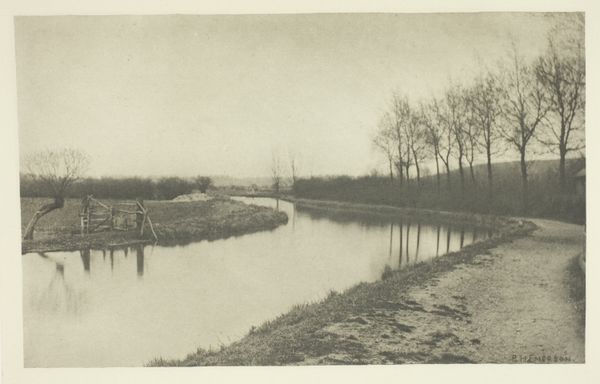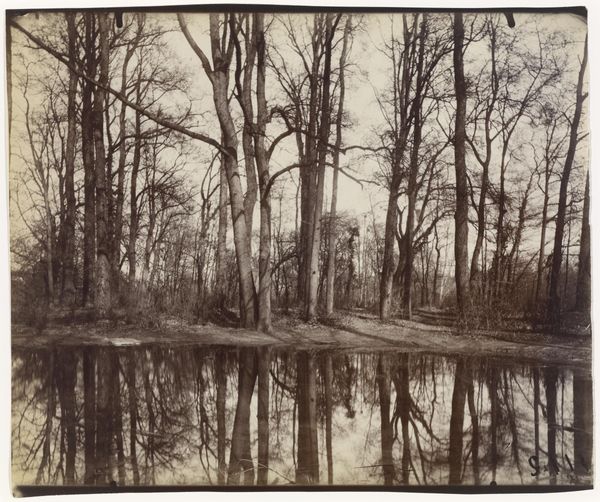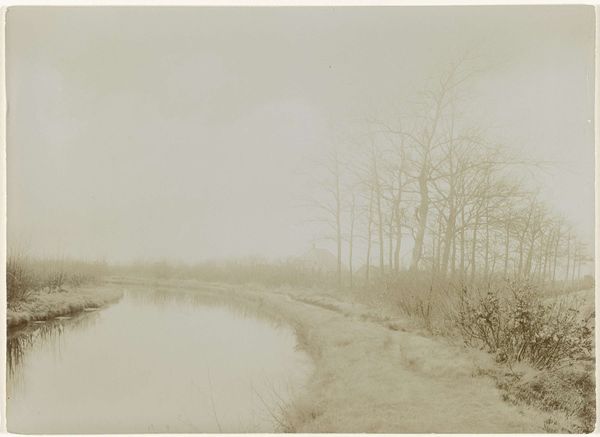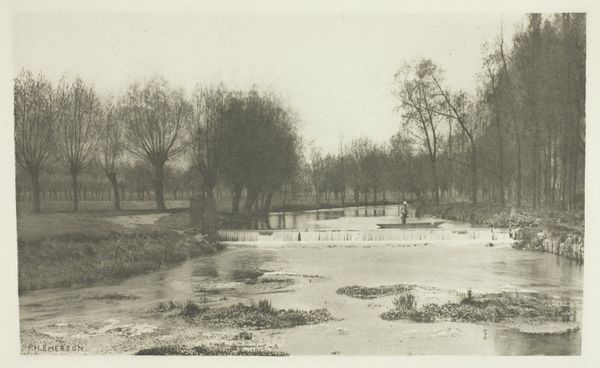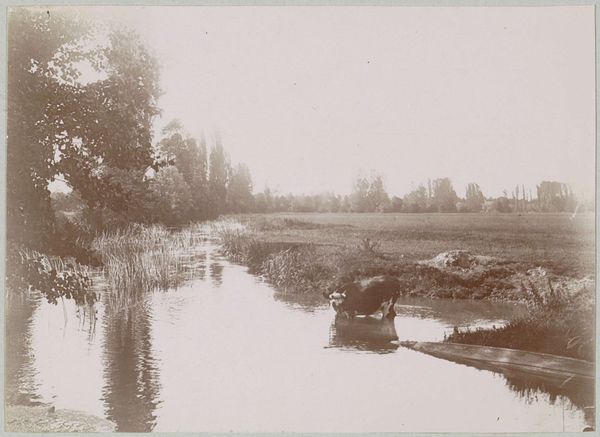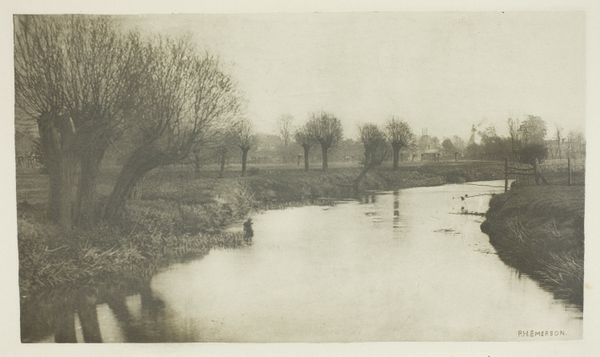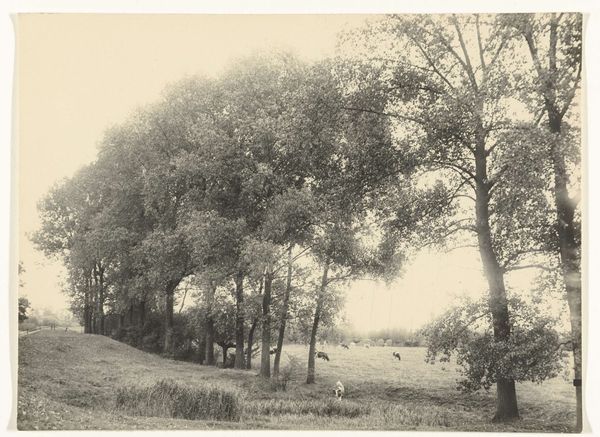
gelatin-silver-print, photography, gelatin-silver-print
#
gelatin-silver-print
#
landscape
#
nature
#
photography
#
gelatin-silver-print
#
united-states
#
natural environment
#
realism
Dimensions: 12 13/16 x 16 1/8 in. (32.54 x 40.96 cm) (image)15 7/8 x 19 15/16 in. (40.32 x 50.64 cm) (mount)
Copyright: No Copyright - United States
Editor: We’re looking at Thomas Sheckell’s gelatin silver print, "Springtime on the Jordan," created around 1942. It’s a fairly traditional landscape, but something about the starkness of the trees reflected in the water really draws me in. What do you see in this piece? Curator: Well, immediately, I consider the materiality. A gelatin silver print inherently speaks of a process involving mass production – photography was, and is, replicable in ways painting is not. The choice to depict a seemingly untouched landscape during a time of industrial boom highlights a fascinating tension. What materials were available to the artist? How did this process shape the outcome? Editor: That's an interesting angle, considering it’s a scene that feels very natural, almost untouched. Do you think the process itself, being reproducible, takes away from the uniqueness of the scene depicted? Curator: Not necessarily. Instead, consider the labor involved. Creating this print still required skill, time, and access to resources. What societal class did the artist belong to that enabled them to purchase photographic materials? The artistic merit lies not just in the 'aura' of originality but in the choice and execution of a reproducible medium. Also, consider the 'Jordan' -- how is this scene different or the same than the famous river and how might that affect consumer interpretation? Editor: So, it's less about the single perfect moment captured and more about the statement made through choosing photography itself? Curator: Precisely. It's about understanding the material conditions that allowed for the creation and distribution of this image. The mass availability of photographs created a culture of consumption. Do you agree? Editor: I hadn't really thought of it that way before, focusing on the economics and availability. I was drawn in more by the simplicity. I can see that it's less a document and more like, a critique of, or comment on, mass production. Curator: Exactly! And that's why considering materials and mode of production opens up an understanding to the relationship between labor, industrial context and landscape. I am so pleased to have given you a different lens to appreciate Sheckell's technique!
Comments
No comments
Be the first to comment and join the conversation on the ultimate creative platform.


